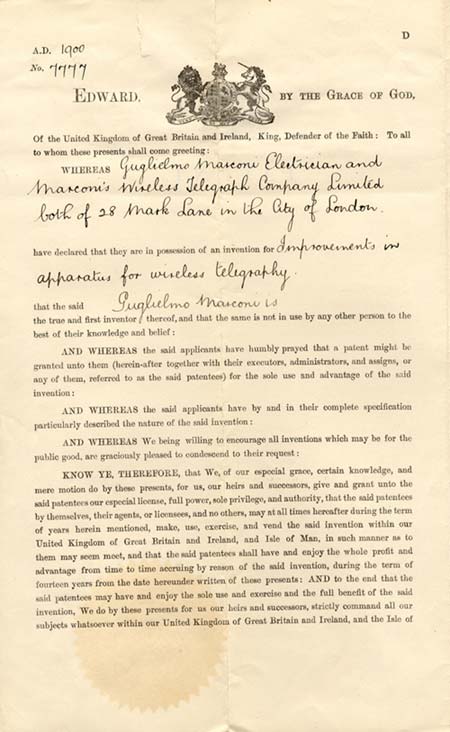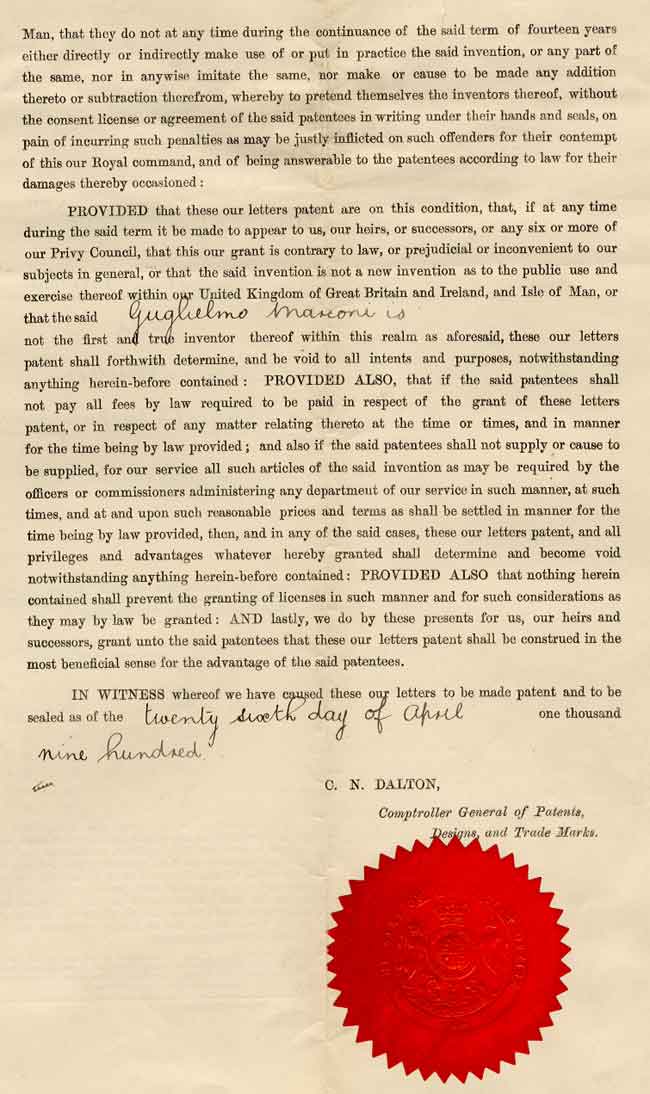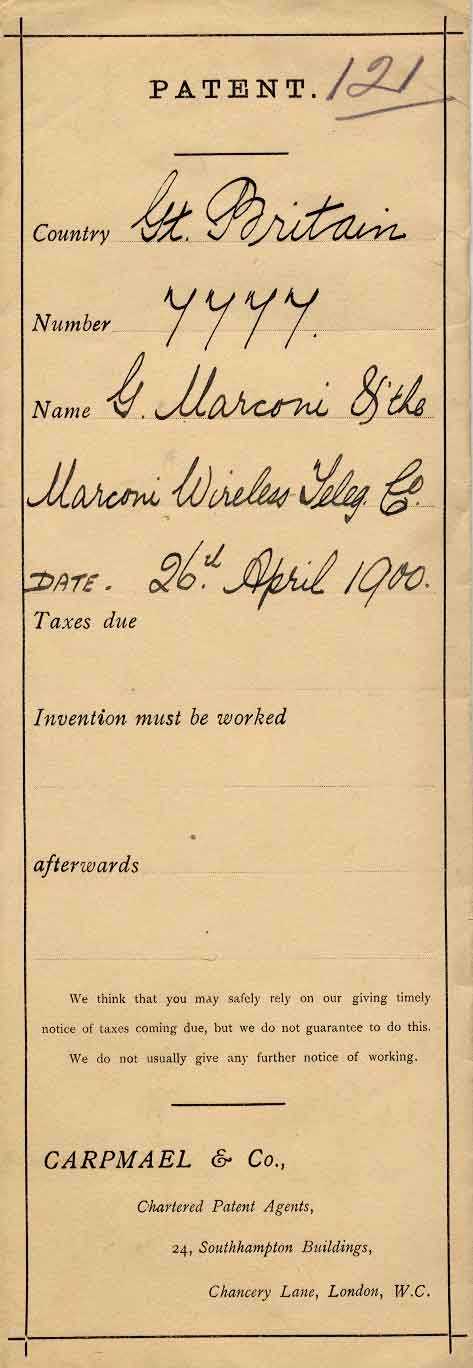 | |
 | |
| Documenti Marconi | |
| Cronologia telegrafo | |
| Cronologia telefono | |
| Cronologia
radio | |
| Cronologia TV | |
| Cronologia componenti | |
| Indice Scienziati | |
| Bibliografia |
| GUGLIELMO MARCONI
|
| Documenti
|
| English Patent No. 7777 of April 26, 1900 |
 |
 |
 |
 |
| |
La
base per il brevetto n.7777, noto come il brevetto "Four Sevens", era
il circuito sintonizzato sviluppato presso l'Haven Hotel. Il
principale problema tecnico individuato da Marconi che doveva essere
superato, era quello del funzionamento multi-stazione senza
interferenze reciproche. La prima ricerca intrapresa all'epoca ha
portato alla creazione di un sistema di trasmissione e ricezione in cui
tutti e quattro i componenti principali sono sintonizzati. Questo sviluppo è ciò che ha ottenuto Marconi il brevetto "per miglioramenti negli apparecchi per la telegrafia senza fili". |
|
The
basis for the Patent no.7777, known as the 'Four Sevens' Patent was the
tuned circuit developed at the Haven Hotel. The major technical problem
that Marconi identified which had to be overcome, was that of
multi-station
operation without mutual interference. The primary research undertaken
at the time resulted in the creation of a transmitter and receiver
system
in which all four major components were tuned. This development was
what
gained Marconi the Patent 'for improvements in apparatus for wireless
telegraphy'. This is the '7777' patent that states Marconi to be 'true and first inventor' and 'that the same is not in use by any other person to the best of their knowledge and belief'. |
|
Although
he had a remedy in mind, Marconi declined to reveal to the US Navy how
interference between signals might be prevented, thus also prolonging
its
use of carrier pigeons. Six months later, on 26 April 1900, he could finally reveal his solution to the issue of mutual interference, as the patent for which he had been preparing his specification was now filed. Numbered 7777 and known as the 'Famous Four Sevens', it was the catalyst for the next stage in the company's development, heralded the day before by the formation of Marconi International Marine Communication Company. Without this patent, the purpose of Marconi International Marie Communication Company - to exploit the potential market for wireless in international shipping and to stave off German and US competitors - would have been much more difficult - if not impossible - to achieve. The patent solved the problem in which, as power was increased to obtain longer ranges, signals spread to the extent that simultaneous transmission from adjacent ships or shore stations caused overlap and mutual interference. Marconi's solution was inspired by an experiment patented in 1897 by his old rival Professor Oliver Lodge, of tuning the sending and receiving aerials. Marconi's patent was for selective tuning in which other circuits in the transmitter and receiver, as well as the aerials were tuned to the same wavelength. Lodge was unhappy and litigation followed. But the new technique made possible Marconi's next great scheme, to span the Atlantic by wireless. |